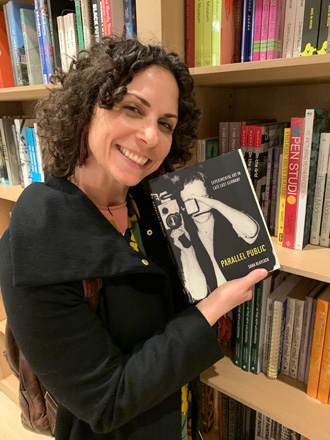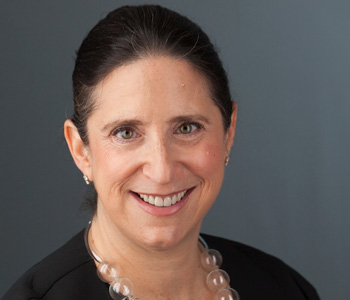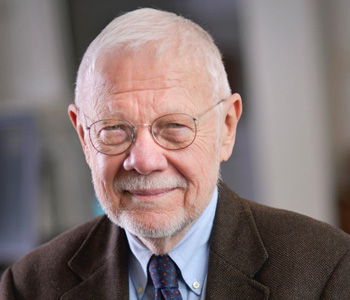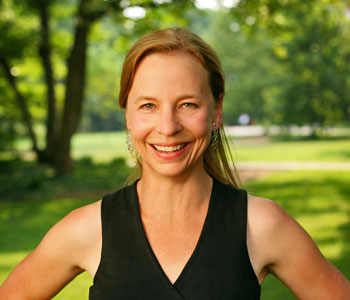Sara Blaylock
Parallel Public: Experimental Art in Late East Germany
MIT Press
328 pages, 7 x 9 inches
ISBN 9780262046633
Parallel Public examines experimental art from the final years of East Germany in relation to state power. In the book, I argue that these artists did not practice their art in the shadows, on the margins, hiding away from the eyes of authorities. In fact, many artists cultivated a critical influence over the very bureaucracies meant to keep them in line, undermining state authority through forthright rather than covert projects. In Parallel Public, I describe how the experimental art scene was a form of counter public life that represented an alternative to the crumbling collective underpinnings of the state.
The book explores the work of artists who used body-based practices–including performance, film, and photography–to create new vocabularies of representation, sharing their projects through independent networks of dissemination and display. The examples I selected for the book exemplify the material innovation as well as the community-building aspects of the GDR’s small experimental art scene. Gundula Schulze Eldowy’s photographs of exhausted laborers challenged the wooden image of an emancipated proletarian advanced by state culture. The filmmaker Gino Hahnemann who set nudes alight in city parks and imagined a homosocial world for Germany’s cultural heroes fostered a safe creative community for East Berlin’s gay youth. The Leipzig-based independent publication Anschlag collaborated with the exhibition space EIGEN+ART to share the work of experimental artists and writers in public platforms that ultimately reached across the wall to West Germany. In a country that proclaimed but scarcely delivered equality of the sexes, the collective films and fashion shows of Erfurt’s Women Artists Group Exterra XX fused art with feminist political action to compensate for the GDR’s foundational misogyny.
Importantly, these creators were as bold in their ventures as they were indifferent to state power. I approach that discussion in a few ways, both of which seek to remedy traditional ways of thinking about life in the Eastern Bloc, which tend to exaggerate state authority over individual life. First, the majority of the examples I explore in the book reveal a clear connection to state apparatuses of culture. The GDR’s experimental artists studied at the country’s art schools; the degrees they received gave them access to membership in the Union of Fine Artists. This means that across their trajectories, from student to professional, artists found ways to use official platforms to publicize or even financially support their efforts. My historicization challenges the traditional dichotomies of official and unofficial art that not only undermine the art of the GDR in broad strokes, but also reinforce narratives of the Cold War that define citizens as either oppressors or oppressed.
The image of a victimized citizenry is particularly exaggerated in the mythologies that surround the GDR’s surveillance system, the Stasi. While I demonstrate that the Stasi had an outsized (and largely unanticipated) presence of state security, rather than dwelling on the presumed impacts of the Stasi, I actually demonstrate the agency’s ineffectiveness at curtailing the experimental culture that was its frequent target. The cover of my book reveals this approach most succinctly; I will reflect on the photograph, taken from a Stasi surveillance file, a bit below.
In terms of audience, I wrote Parallel Public with an eye toward vivid description, that complements its many reproductions. From original artworks to documentation of events to excerpts from Stasi surveillance files, Parallel Public reveals its archive as much to highlight the subjects I wrote about as to inspire future research or display. I also wrote with a measured and intentional pacing that leads readers from typical impressions of the GDR (oppressed, frustrated) to a more expansive view of the period (collaborative and innovative). The chapters are relatively short and subject heads break the reading in order to accommodate the breaks I personally find necessary when reading.
Picture of the author holding her book at the MoMA bookshop in New York City. Photo by Ace Lehner, 2023

Parallel Public introduces material that is new to German art history, particularly in relation to an idea of artistic autonomy or independent thought in the oppressive context of East Germany. My analyses are informed by my commitments to feminist art histories, as well. This means not only that I bear in mind who I am writing about, but also about how their work advances equality and builds community and horizontalizes traditional power dynamics.
For example, I dedicate a large section to photographs Gundula Schulze Eldowy took of Tamerlan, a woman she met in a park one morning in East Berlin. Over the course of a several year friendship Schulze Eldowy recorded Tamerlan as she faced a series of amputations and her move from independent living to a nursing home. Schulze Eldowy’s series records the experience of aging with a degree of empathy amplified by the collaborative nature of her photographic practice. Historically, these images are important because the East German government’s youthful and ableist priorities did little to dignify the experiences of people who could no longer––or never could––conform to a utopian ideal.
I mention the example of Schulze Eldowy’s images of Tamerlan because it reveals both a grounding motivation in this book as well as an overall purpose that drives my scholarship, in general. I am interested in how art can advance equality and believe strongly that a record of the marginalized contributes to a more inclusive view of the world. In this sense, Schulze Eldowy’s photographs function both for the 1980s East Germany and for our time, when of course prejudice against the aging or differently abled body persists. I am also really gripped by the relationship building aspects of an artistic practice, specifically the ways that art that has an element of collaboration either at the fore or as a latent quality acts as a binder between people. In short, exploring art as a kind of encounter between very specific parties interests me profoundly.
I could really wax rhapsodic about a number of other examples of the kind of relationship building through creative practice from the book. In the interest of space, I draw reader’s attention to the chapters on Gino Hahnemann (Chapter 4) as well as on the Women Artists Group Exterra XX (Chapter 6). It bears mentioning that the founding organizer of this group, Gabriele Stötzer, turned to creative work after a year-long imprisonment for political activity in the late 1970s. She went into prison an activist and came out an artist, motivated by the world building potential of working with a local community.
The discussion of larger motivations for the project helps me to answer another part of this question, about how my path led me to this research topic. The book originated as my doctoral dissertation, which I defended in spring 2017. From the very first interviews I had with artists and their contemporaries when I first began the study about ten years ago I very quickly recognized the desire people from the former East Germany had to see a more complex historical accounting of their creative lives.
Having frequented some really interesting non-commercial art spaces in the Bay Area of the early to mid 2000s, I also found familiar the ways that the GDR’s experimental artists used spontaneity, including their innovative use of materials and space. Also inspiring to me were the ways that the experimental scene in East Germany was by definition non-commercial. Of course, this was a practical reality. In fact, the scene effectively ended when the two Germanys reunified in 1990 and the GDR’s artists began to experience the commercial realities of the Western art world. Nevertheless, I think there are some important correlations between how artists defined their methods of practice (improvisational, locally responsive) and the ways that artists I knew in the early 2000s were working to create a creative life for themselves and their communities. The comparison wears thin when we think about the stark differences between the economic realities of the Cold War East German artist and those of an artist in San Francisco or Oakland in the year 2004. Specifically, life was inexpensive in the GDR, and many artists actually took advantage of generous cultural policies that supported the arts, while life has only gotten more expensive for the artist who wishes to produce a creative community in and for itself in a large American city.
In fact, I’d want the reader to really take a good look at the cover of the book. The photograph comes from a Stasi surveillance file of a groundbreaking art event named Intermedia 1, which though organized independently took place at a state cultural center in 1985. The location benefitted the project; hundreds of people attended Intermedia 1 and dozens of artists, filmmakers, and musicians showed their work. It was a defining moment for many people in the GDR, a summit that brought people together in quantities never before seen.
Turning back to the cover, you can see in this image that the Stasi mole (a so-called “unofficial collaborator,” so not a person who actually worked for the Stasi in an official capacity) was friendly with the people he photographed. (My gendering of the spy here is intentional; most people involved in the Stasi were men.) The camera operator is playing around with the person capturing his image; what we see is a kind of playful camera-on-camera moment. The woman, who you see on the back cover is smiling at the camera. Importantly, neither the man or woman in the photograph would have known that the person taking their picture was doing so on behalf of the Stasi.
We see a man and woman engaging with their observer, a Stasi informant who was not only an acquaintance, but a friend worthy of not just a smile, but a kind of joke, a recording in double. This image resonates with me, a reminder of both the intractable quality of state authority, its tactics always adapting, but also the intractable quality of experimental artists, whose tactics too were always adapting, that is to say, relentless.
The photograph in many ways encapsulates the argument of the book, at least in relation to state power. For anyone inspired to look at the origin of the photograph, please now turn to Chapter 5, which uses the Intermedia 1 festival both as a means to highlight the way that interdisciplinary artistic practices figure in East Germany’s larger (namely ideologically motivated) art history. The festival also marks a turning point in the ways that artists worked to bring their work to broader audiences.
Front and back cover of Parallel Public: Experimental Art in Late East Germany. Photo by Ace Lehner, 2023.

The history explored in Parallel Public stands on its own merit, even if it has scarcely been explored previously, especially in the English-language context. I should note that even in Germany, the approach I take, which unites a multiplicity of sources and examples that have not been previously studied together, is likewise pretty unique. Extant studies have also presented the GDR’s artists in divisions based on region, gender, and/or medium. The experimental artists of the late GDR were committed to working autonomously and without fear of recrimination from a government that had historically not been very generous with citizens who refused to conform. It is inspiring to read about their efforts, both on an individual and a cumulative level. We can see from this history that persistence, in this case a demand for artistic freedom, can lead to tangible change even in the most intransigent of contexts.
The ways that these artistic practices could build community or bring greater representation to marginalized subjects translates to efforts that have been significant to art histories since the 19th century. The absence of these stories from a global history, especially in relation to post-WW2 art histories which have been so readily explored using American or Western European examples, reflects not the value of the art, but rather the prejudices that continue to skew people’s impressions of life in the Cold War East.
Importantly, by the Cold War’s final decade, the East German government’s inability to produce a collective public significantly frayed its power. The work of experimental artists was not only an antidote for, but also a diagnosis of a weakening state: a foil and a mirror to official culture. The GDR’s experimental scene produced an alternative public—a parallel public—with commitments to culture, community, and interdisciplinarity that state socialism had sought, but failed to inspire. This irony, really an inversion of state socialist principle, lies at the heart of this book.




We don't put paywalls. We don't distract you with ads. We don't sell your data.
Please help to keep this running!